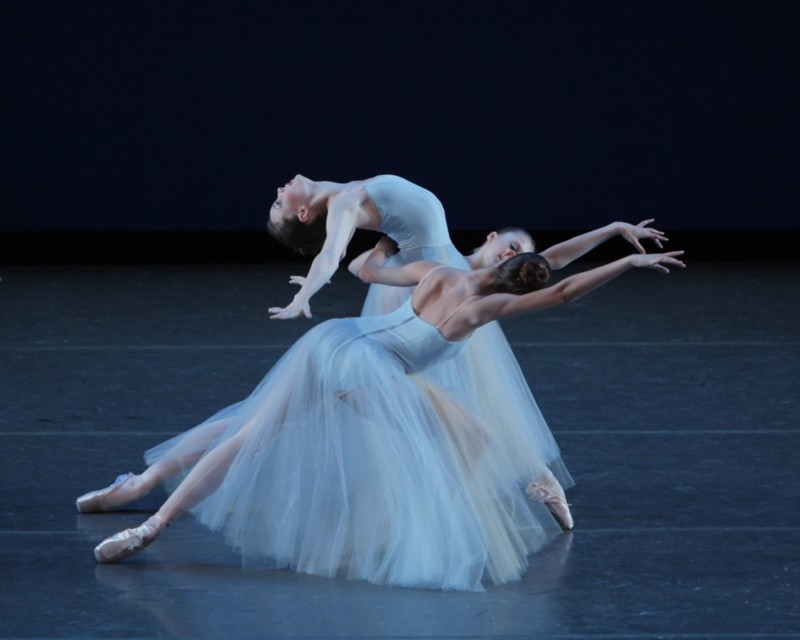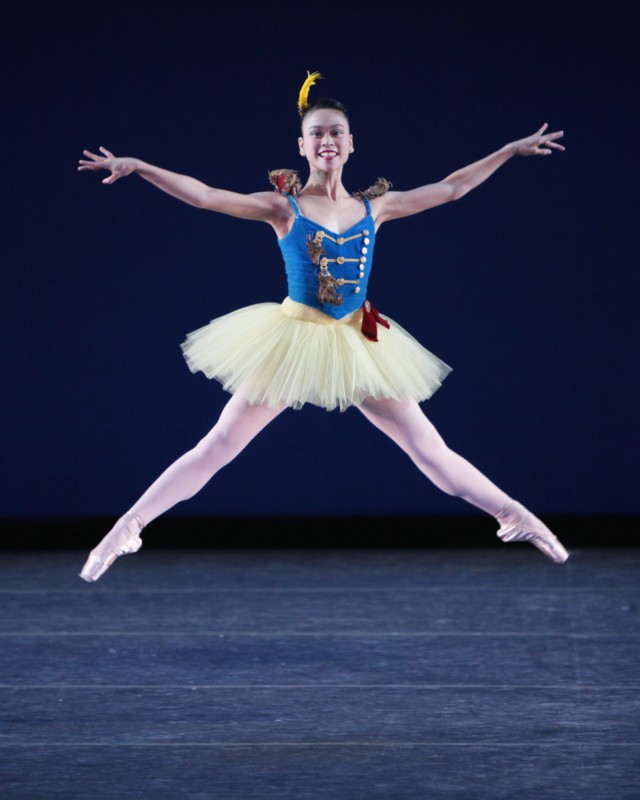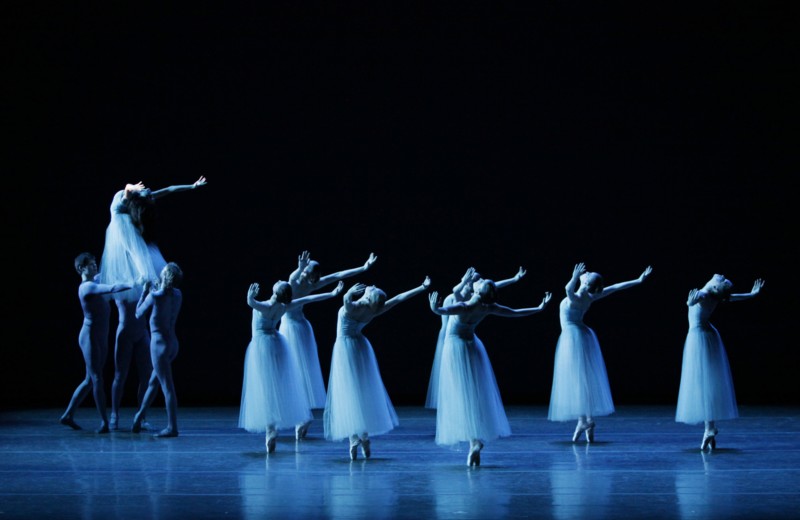School of American Ballet Annual Workshop Performances 2009 / Peter Jay Sharp Theater, Lincoln Center, NYC / June 1 (matinee and evening); June 3 (evening)
“But first a school,” Balanchine is said to have replied to Lincoln Kirstein, when the later was urging him to be the lynchpin in forming a ballet company in the States, intuiting that this choreographer–a genius without a job and in poor health to boot–would change the face of the art. The result of that exchange is evident today not only in the prowess of the New York City Ballet, which recruits the majority of its dancers from the advanced divisions of the school, but, tellingly, in the annual three-performance run of the School of American Ballet Workshop at Lincoln Center’s Peter Jay Sharp Theater. This year, Workshop offered an all-Balanchine program to celebrate SAB’s 75th anniversary.

Serenade. Choreography by George Balanchine © The George Balanchine Trust
Photo: Paul Kolnik
The program consisted of Serenade (the first ballet Balanchine created in America); the “Ballabile des Enfants” from Harlequinade (to show off the astonishing acumen of the juniors in the school, mostly in the 9-12 range, though some looked no more than six), and Stars and Stripes (to activate our patriotism? to show the delicious corniness and bravado of American culture, which delighted and amused the choreographer? to give roles to large flocks of young women and men who many not yet shine as incipient stars but collectively form an impressive ensemble? to provide a rousing closer?).
To me, the program seemed skimpy–too short, for one thing and too much a one-choreographer-show when for decades past the students were shown as well in work by Petipa, Ivanov, Fokine, or Bournonville (to say nothing of Jerome Robbins), which added other significant dimensions to their training. A new work was often commissioned for the program, too. Granted, this was sometimes a mixed blessing, but on other occasions the assignment was a challenge and an encouragement for a emerging choreographer–like, for instance, Christopher Wheeldon.
The program as a whole demonstrated the uncanny skill developed by SAB pupils who stay the course. Serenade, staged by Suki Schorer, a former City Ballet principal now celebrated for her Balanchine productions, was impeccably rendered, with the small nuances Schorer notices and remembers giving the faithful reproduction life and warmth. The choreography itself, though you may have seen it a hundred times, invariably looks new, fresh, a miracle of immediacy. In the matinee and evening performances (which offered cast changes) that I saw on May 30, I especially admired Shoshanna Rosenfield, Lauren Lovette, and Adam Chaviz, who still looks like a stripling but already dances with unmistakable poise and grace.
Garielle Whittle, an SAB and City Ballet alum, supervised the charming “Ballabile des Enfants,” representing familiar commedia dell’arte characters. Here, the littlest dancers, particularly, were like tiny faceted jewels, glittering as they moved with uncannily sharp footwork. The “Whispering Dance,” as it’s called, for four boy-girl couples at the mature end of the Children’s Division, made elegant Scaramouches, chicly costumed in jet black with white-plumed headgear. This segment, though, seems to have lost some of the mysterious atmosphere that once enveloped it–that aura of children just becoming aware of the adult world’s secrets. Or did I just imagine it existed years ago? I think not.
Susan Pilarre, who, once upon a time, when she was an SAB pupil, played children’s roles with the City Ballet, staged Stars and Stripes, distinguished for two of its four sections–first for the all-male “Thunder and Gladiator,” in which a regiment parades its feistiness in ever-changing geometrical patterns and jumps festooned with beats. They’re like a bunch of toy soldiers and irresistible even to a confirmed pacifist, who couldn’t possibly imagine any one of them coming home in a body bag.

Angelica Generosa in Stars and Stripes
Choreography by George Balanchine © The George Balanchine Trust
Photo: Paul Kolnik
Equally engaging, in the “Liberty Bel[” duet that caps the ballet, was Angelica Generosa, who is as sweet and sassy as they come, gently funny (as she should be here), with all the appearance of enjoying every minute–in other words, a born soubrette. She learned this role in merely a week, to replace an injured classmate, Ashly Issacs. Meanwhile Isaacs has been honored with one of SAB’s prestigious Mae L. Wein Awards, which predicts a successful future.

Serenade
Choreography by George Balanchine © The George Balanchine Trust
Photo: Paul Kolnik
© 2009 Tobi Tobias




This is TT’s customary acute and sensitive criticism, always welcome on my screen. Here in Portland, Oregon, Christopher Stowell, who graduated first in his class at SAB and is a wonderful teacher of children–at least in rehearsal–is part of the ripple effect of the Balanchine-Kirstein enterprise. And we see that reflected on stage and in Oregon Ballet Theatre’s school. Will TT’s readers please propitiate the gods and make reverence to Terpsichore for his company, I beg: due to what we are pleased to call the economic downturn (I’d call it plunge) this excellent small company is in acute danger of folding. But not if the national dance community can help it: on June 12, dancers from NYCB, Joffrey, Boston Ballet, Ballet West, PNB, San Francisco Ballet, Washington Ballet and a number of Portland modern/contemporary companies will perform in a benefit-gala unprecedented in Portland and I daresay everywhere else. This is a tribute to Christopher and the tradition he represents.
Hear, hear! And if you can’t be in Portland in person for the OBT benefit, “send” yourself in the form of a donation.